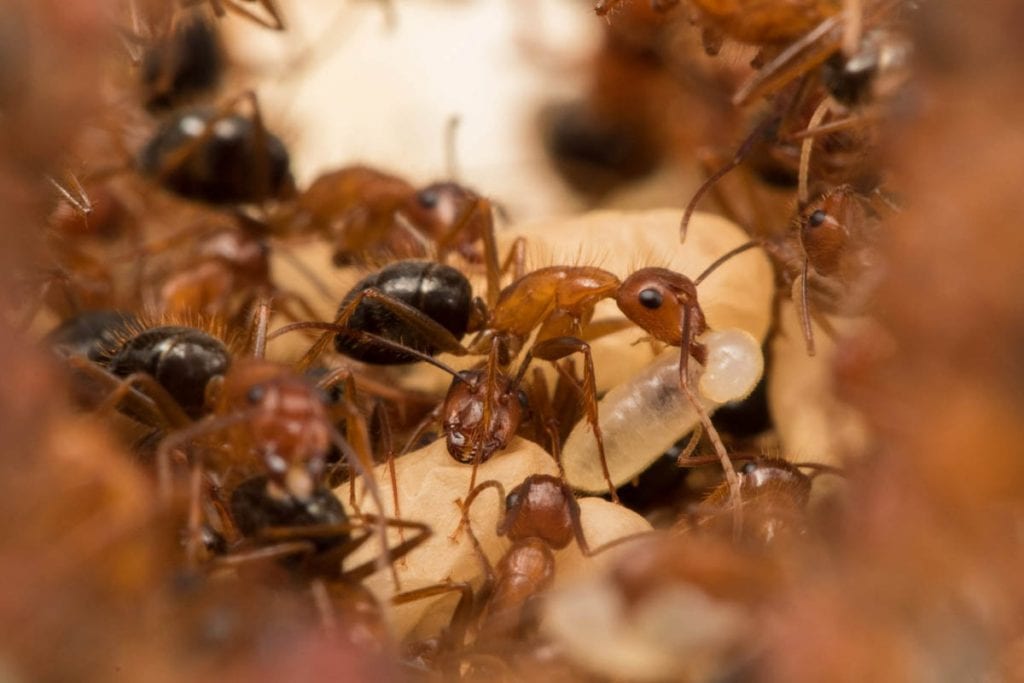The Science Behind Zombie Ants

De Bekker and her students study a group of carpenter ants in UCF’s Parasitic Behavior Manipulation Lab. (Photo by Miles Zhang)
Biology Assistant Professor Charissa de Bekker is working to figure out how a fungus is manipulating and killing ants.
A zombie invasion is happening in Central Florida, but humans aren’t the ones at risk. Rather, some of nature’s tiniest creatures — carpenter ants — are the victims.
Since 2016, biology Assistant Professor Charissa de Bekker, Ph.D., has been studying zombie ants in UCF’s Parasitic Behavior Manipulation Lab and the phenomenon that occurs when a fungal infection takes over the ants’ brains, kills the insects and uses their bodies to grow more parasites.
In a recent study, de Bekker and three co-authors from Pennsylvania State University found uninfected ants are unable to detect zombie ants within their nest since the fungus remains dormant at this time. Normal ants do not avoid or encourage the infected ants to leave, and in some cases they even share food until their final moments.
De Bekker and her team of graduate and undergraduate students specifically study how Ophiocordyceps fungi turns the Camponotus floridanus species of carpenter ants into zombies. Parasites affect host behaviors in multiple ways, yet researchers do not understand how they are able to do this, de Bekker says.
“Learning more about this will allow us to better understand [parasites’] effects on their hosts, the ecosystems they are part of and also provide us with strategies to battle them,” de Bekker says. “The zombie ants display one of the most pronounced behavioral manipulation and are therefore an excellent model.”
De Bekker’s work not only contributes to the science of ants, parasites and hosts, but also has the potential to uncover more about the bioactive compounds of Ophiocordyceps fungi.
“In general, fungi have an impressive track record of producing all kinds of compounds that are extensively used in medicine and industry,” says de Bekker. “This group of fungi has hardly been studied, so in our quest to find how these fungi manipulate ants, we might find all kinds of interesting compounds.”
by Nicole Dudenhoefer ’17

